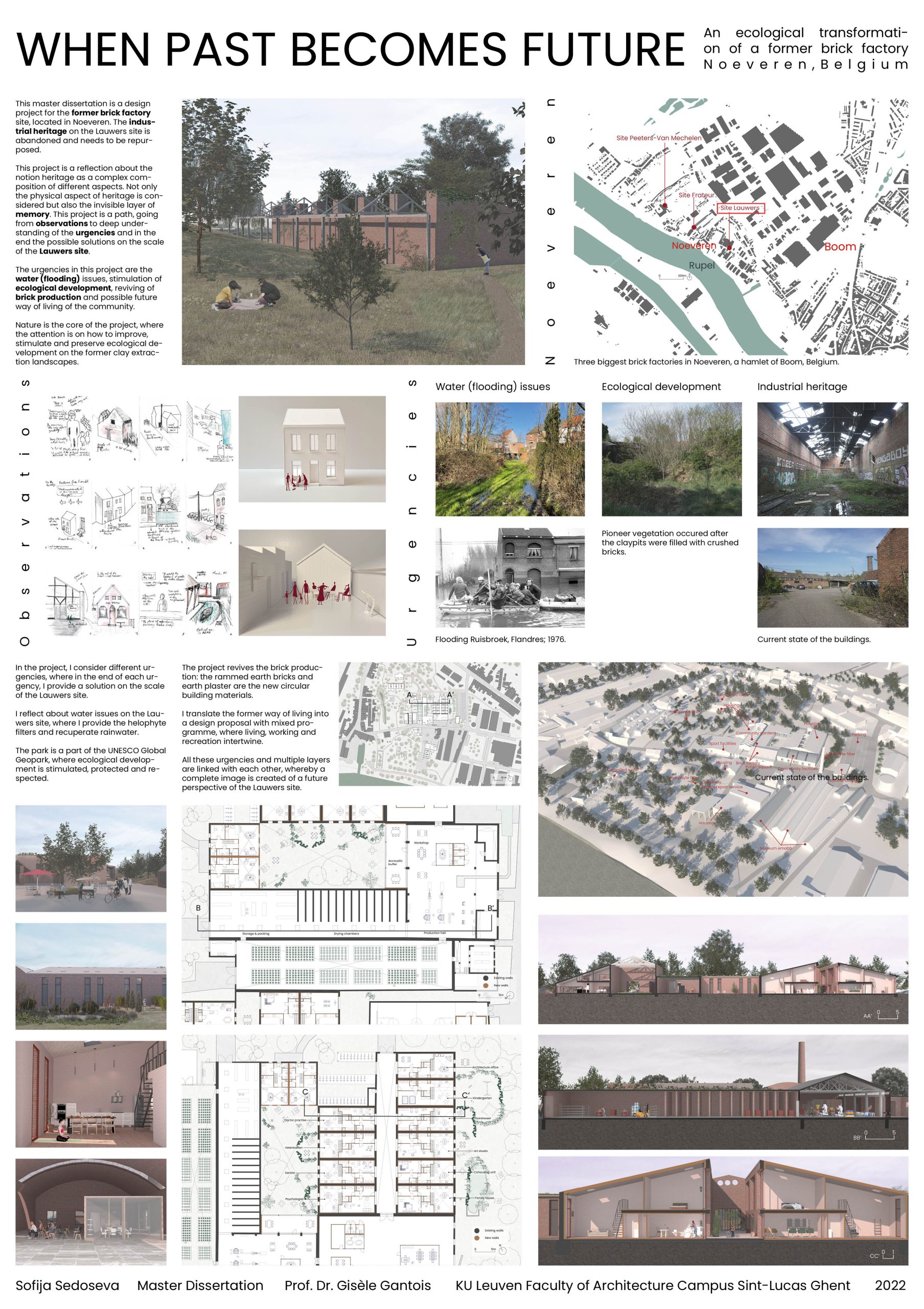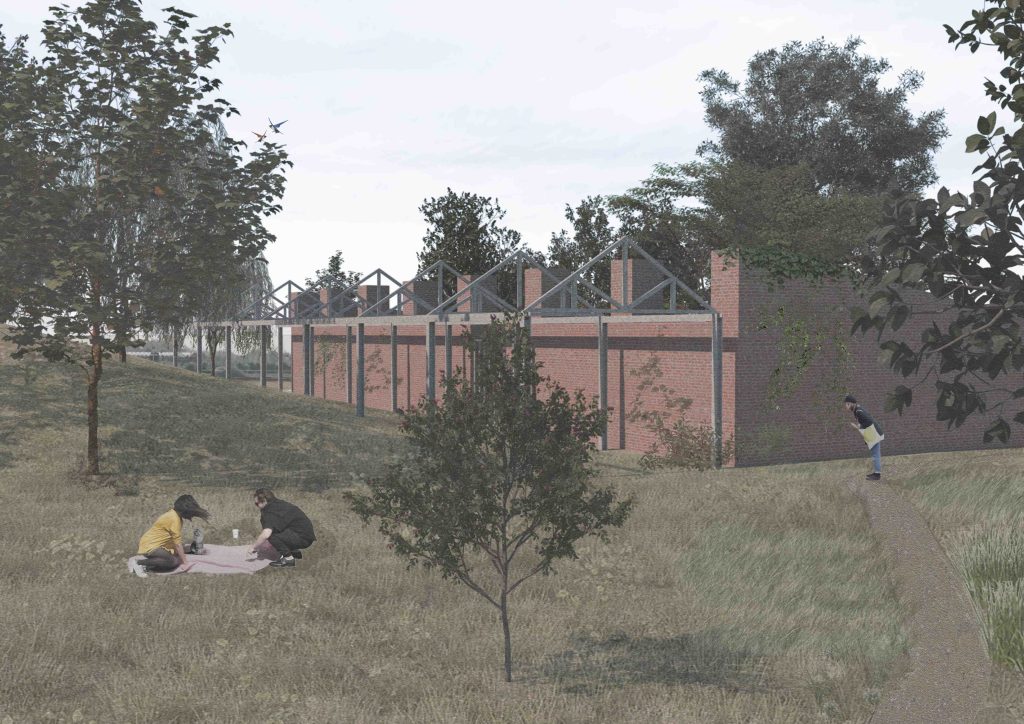This master dissertation is a design project for the former brick factory site, located in Noeveren (Belgium). The industrial heritage on the Lauwers site is abandoned and needs to be repurposed.
This project is a reflection about the notion heritage as a complex composition of different aspects. Not only the physical aspect of heritage is considered but also the invisible layer of memory. This project is a path, going from observations to deep understanding of the urgencies and in the end the possible solutions on the scale of the Lauwers site.
The urgencies in this project are the water (flooding) issues, stimulation of ecological development, reviving of brick production and possible future way of living of the community.
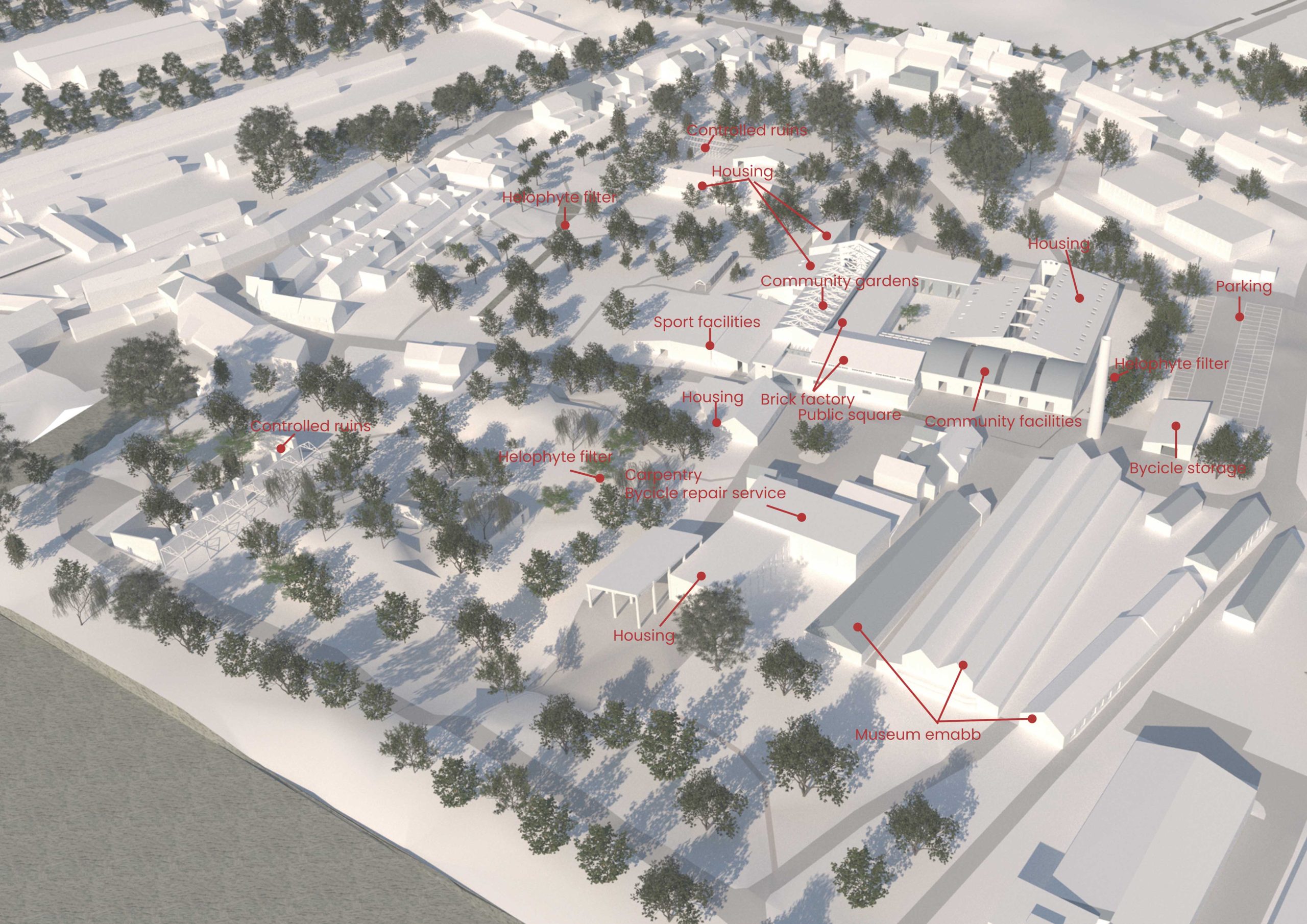
I provide solutions for each urgency on the scale of the Lauwers site.
I reflect about water issues on the Lauwers site, where I provide the rainwater recuperation system and extend the existing ditches, to solve the flooding issues. Moreover, the recuperated rainwater can be reused for domestic and industrial purposes.
I work with ecological development of the site. The site is a former clay extraction site where nature tries to find its own course, through developing of pioneer vegetation. By choosing the vegetation for the helophyte filter, the ecological condition of the site improves, where new species are welcome.
The park is a part of the UNESCO Global Geopark, where ecological development is stimulated, protected and respected.
The project revives the brick production which was the main activity in the region. The rammed earth bricks and earth plaster are the new building materials, that are produced on the site. Moreover, the production is carbon-free and includes the use of waste. The products are circular building materials.
Noeveren is a hamlet where former brick factories, worker’s houses and communal facilities were located close to each other. I translate the former way of living into a design proposal with mixed programme, where living, working and recreation intertwine.
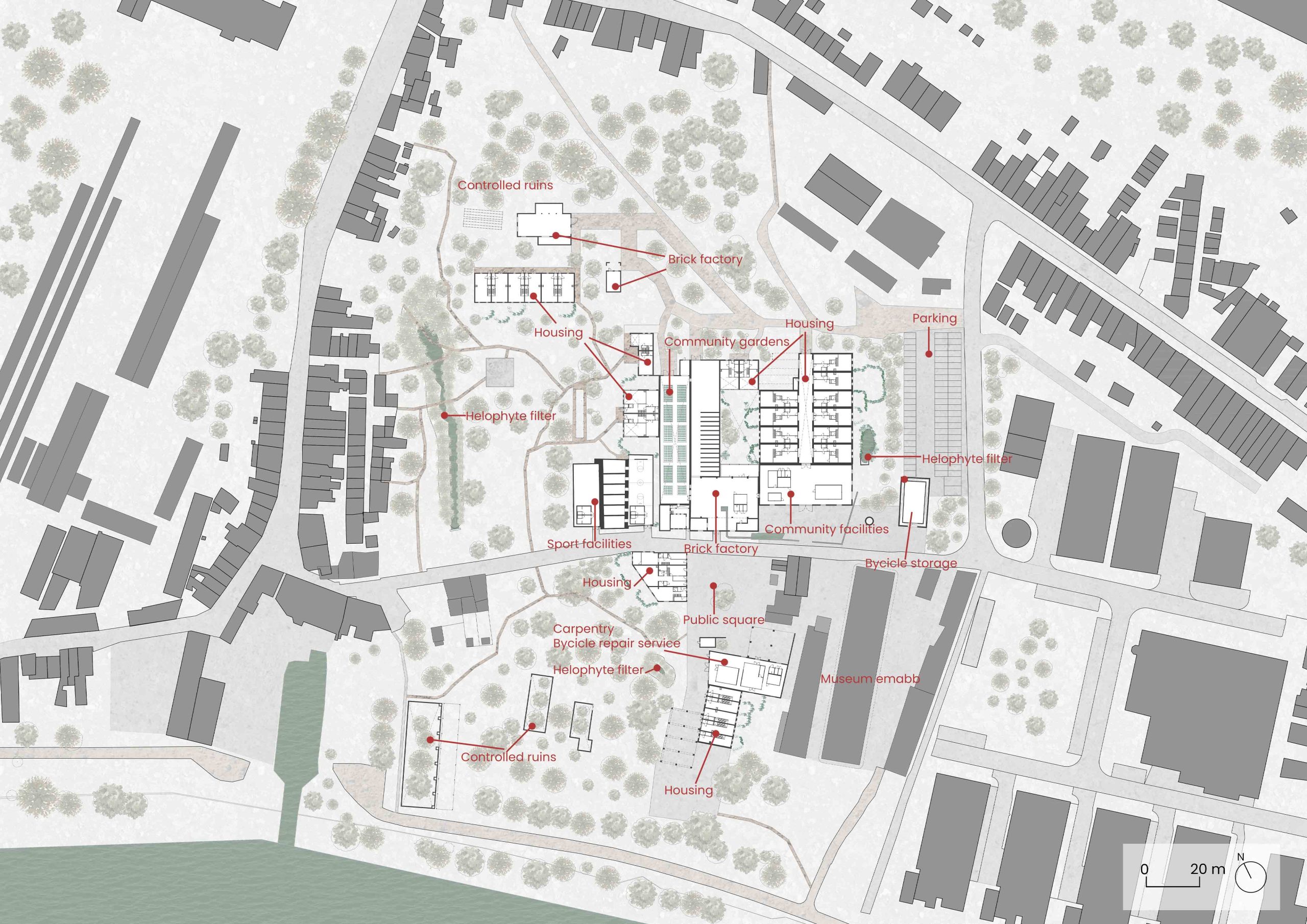
All these urgencies and multiple layers are linked with each other, whereby a complete image is created of a future perspective of the Lauwers site.
A future perspective, where I deal with heritage by looking at different physical and non-visible aspects. With a minimum of touching, demolishing and transformation, the project shows how the former way of living can be transformed into a future with respect for heritage, nature and society.
Full book: https://issuu.com/sofijasedoseva/docs/sofija_sedoseva_master_dissertation
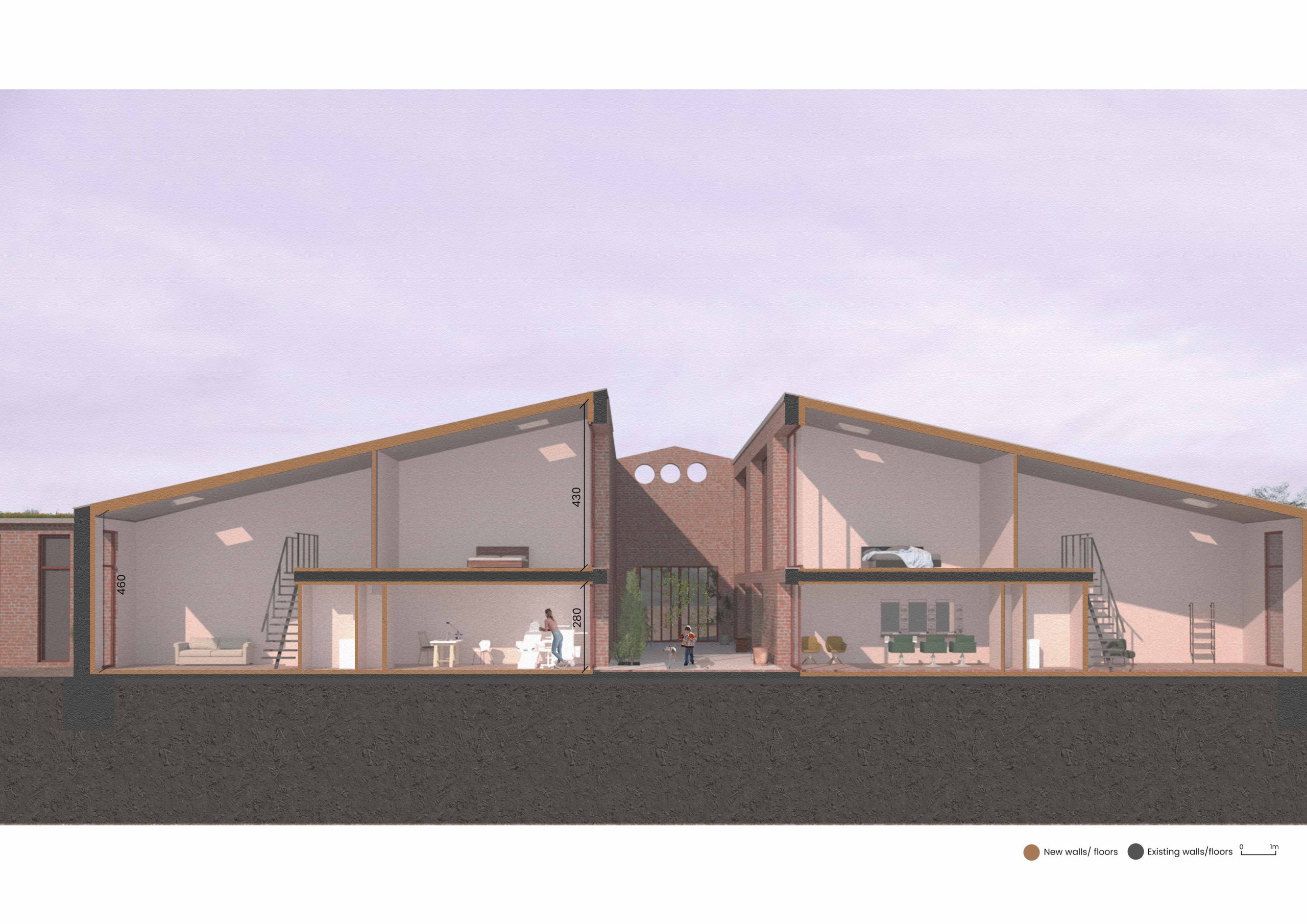
The Board:
